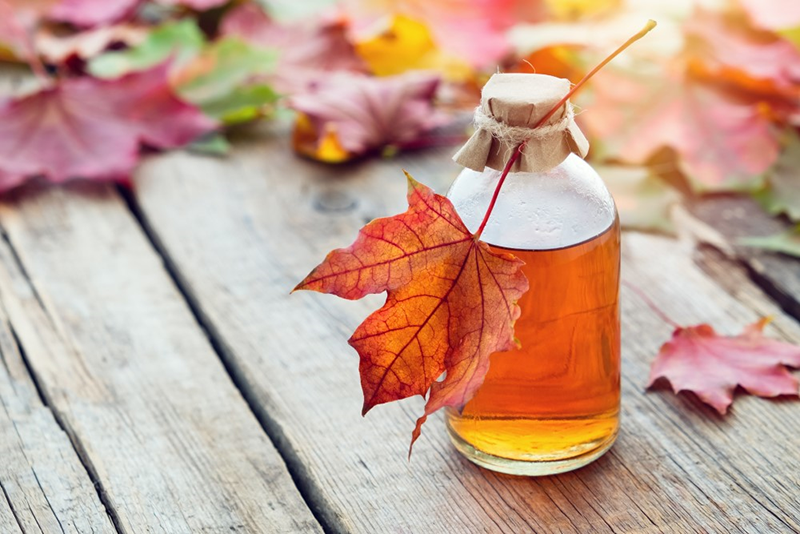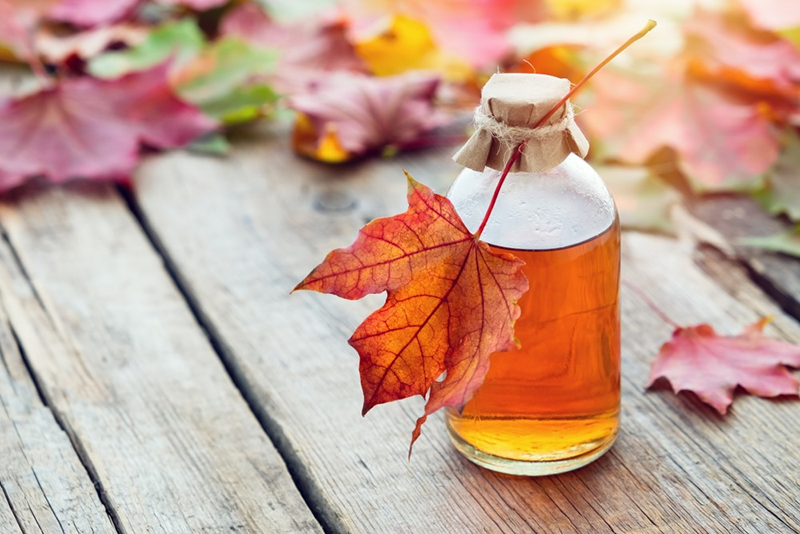Sensor Judges Taste of Raw Maple Syrup
As a result of climate change, maple syrup producers are experiencing detrimental changes in their product quality late in the harvest season. To help them catch these substandard batches in advance, Jean-Francois Masson and his colleagues at the University of Montreal now demonstrate a portable tool for testing sap directly from the tree before it’s been processed into syrup. By simply observing color changes when a drop of sap is placed on a handheld plasmonic sensor, the researchers can determine whether the final product will taste rich and caramel-like with hints of woody vanilla—or like old cabbage. The work was presented earlier this month at the annual meeting of the Canadian Society for Chemistry.
Maple syrup is comprised of 66% sucrose, 33% water, and 1% organic molecules that together define its flavor. But the combination of organic molecules in the unprocessed sap can vary not only from one maple tree to the next but can change over the course of a season. These varying molecular profiles dramatically affect the taste of the final product. Conventional approaches to maple syrup quality control rely on professional human inspectors who rate the flavor at the end of a long process that involves collecting the sap and boiling it. If the result is bad-tasting syrup (which happens for several percent of the batches), then a lot of resources have gone to waste at a substantial cost to the producer. The Quebec Maple Syrup Producers (QMSP), who collectively produce some 300,000 barrels each year and account for 75% of the world’s supply, needed a better system for identifying off-flavor batches.
To help the QMSP, Masson developed a sensor that could predict a maple syrup’s commercial grade on the basis of how a droplet interacted with a solution of gold nanoparticles. His approach relies on the fact that incident light causes surface electrons in noble metal nanostructures to oscillate at some resonant frequency. Changing the size or shape of the nanoparticles alters this frequency, resulting in a wavelength shift in the solution’s color. In 2020, Masson and his colleagues tested 1800 syrup samples from across Quebec, and they found that droplets of off-flavor syrup samples caused the color of their gold nanoparticle solution to change from blue to red—much like a litmus test for pH. The color change resulted from a clumping of nanoparticles induced by molecules in the off-flavor samples.
In their new study, Masson and colleagues tested 30,000 syrup samples [1]. They first used these data to uncover which types of molecules ultimately caused a “bad” batch. They found a correlation between the plasmonic sensor’s color change and the concentration of certain amino acids that react with sugar.
Then came the hard part—trying to catch an off-flavor batch before it gets processed. “Testing syrup is one thing. Predicting the outcome from raw sap is another,” says Masson. Taking a subset of the 30,000 samples, he and his fellow syrup sleuths used their sensor to test 600 sap samples alongside their syrup counterparts, finding a correlation between the color output of the sap and of the syrup. “We showed that from the sap we can predict what the syrup’s flavor category will be before production,” says Masson.
Masson collaborated with mathematicians to develop a model that predicted the likelihood of a good or of an off-flavor maple syrup from the color that the sensor turned with a droplet of sap. “The producers test the sap, and we correlate the result with a color chart: if it’s green, boil it and make syrup; if it’s red, you run the risk of wasting your time,” Masson says.
William Peveler, a chemist at the University of Glasgow, UK, who develops nanomaterials for sensing and imaging applications, says “the sheer number of samples that Masson and his team managed to test is incredible.” Doing so allowed them to delve into the chemical composition of the sap and syrup and to explore how the variations in chemistry affected the results. Peveler says that the work offers lessons for developing new chemosensing methods for real-world applications.
Masson has recently patented a commercial sap-testing product (resembling a pool-testing kit). Next up, he hopes to develop a nanoparticle-based sensor that could test grapes for compounds that might predict wine quality. When it comes to “tasting” the subtle chemical influences in our food, “the possibilities are limitless for gold nanoparticles,” Masson says.
–Rachel Berkowitz
Rachel Berkowitz is a Corresponding Editor for Physics Magazine based in Vancouver, Canada.
References
- S. Forest et al., “Prediction of maple syrup quality from maple sap with a plasmonic tongue and ordinal mixed-effects modeling,” ACS Food Sci. Technol. 3, 635 (2023).





